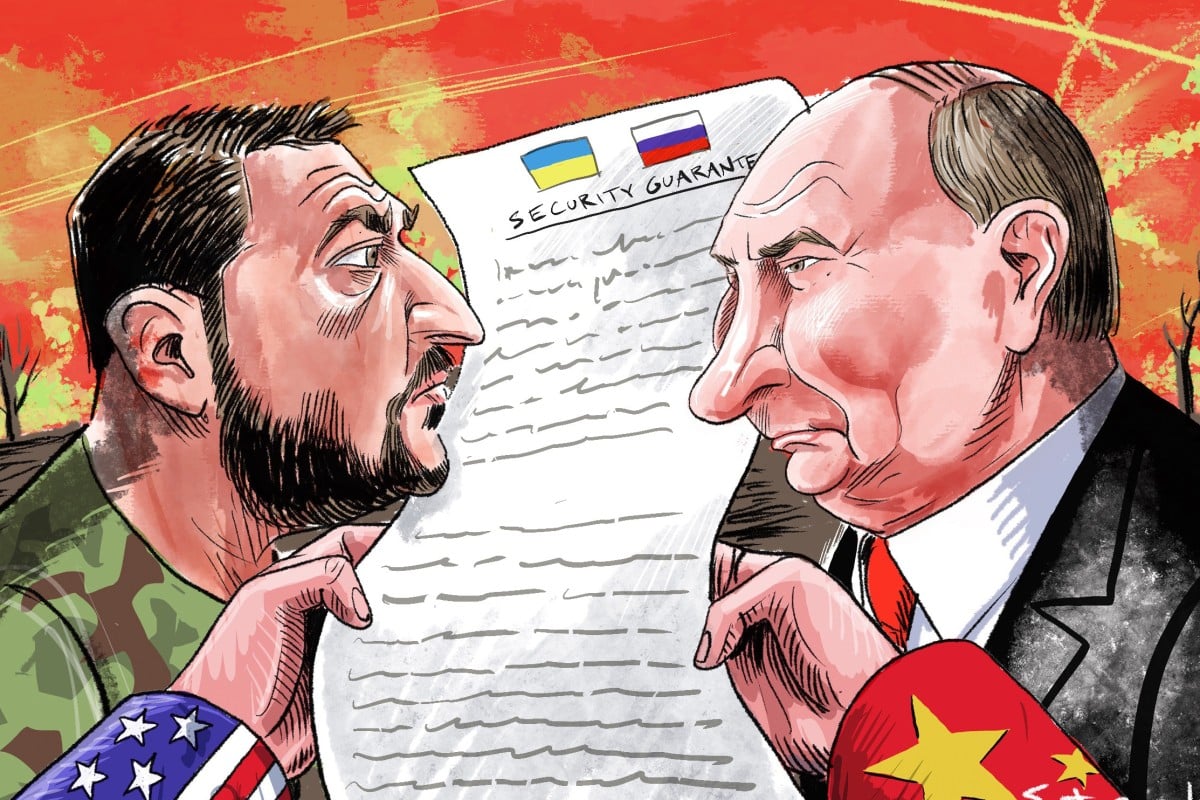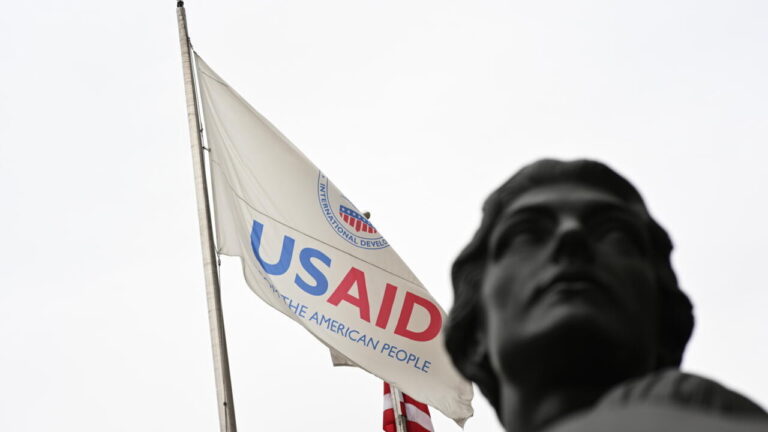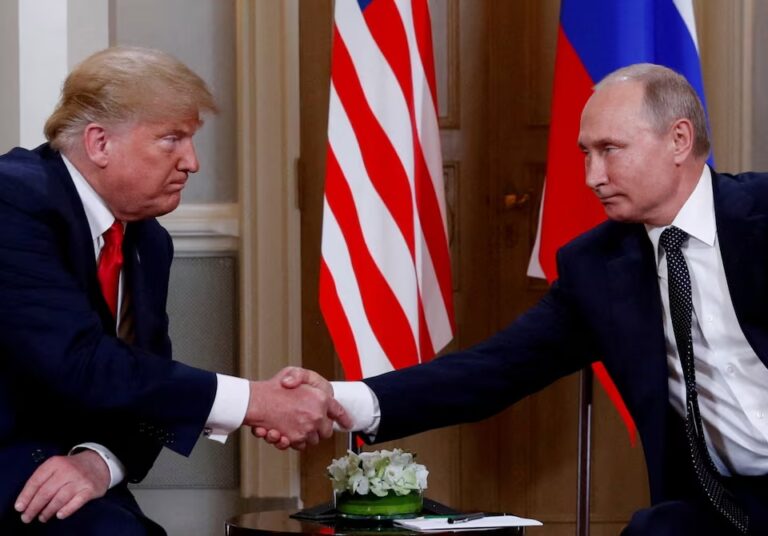Beijing and Washington should take the lead on a plan to offer a collective security guarantee to Kyiv and Moscow as a foundation for a deal
When I wrote in the Financial Times in 2023 that even though China has nothing to do with the Ukraine war, the longer it drags on, the more people will look to Beijing as a broker, I never expected Donald Trump to be re-elected as US president and ask China for help.
At the World Economic Forum in Davos, Trump said he had reached out to President Xi Jinping during a phone call and described China as having “a great deal of power over that situation”.
There is a grain of black humour when the man who vowed to end the war within 24 hours asks China to step in. However, Trump didn’t even need to ask. A year after Russia invaded, China proposed a 12-point peace plan.
Last year, Beijing in collaboration with Brazil also launched the Group of Friends for Peace on the Ukraine Crisis, which includes several other nations. However, these efforts haven’t been successful. Ukrainian President Volodymyr Zelensky even called the China-Brazil peace initiative “destructive”.
Beijing cannot help single-handedly. At a time when Moscow and Kyiv believe they must keep fighting, no outside proposals will work. Russian President Vladimir Putin wants to take back Kursk and have full control of four Ukrainian regions while Zelensky is bent on joining Nato even at the cost of losing some territory.
Can China and the US work together to end the war in Ukraine? The answer is yes. To do so, they should take the lead on a plan where major powers offer a collective security guarantee.
A collective security guarantee is indelible in the memory of Ukrainians. In the 1990s, states with nuclear weapons – the US, Russia, Britain and France – provided such an assurance to Ukraine in exchange for Kyiv returning Soviet-era nuclear weapons to Russia. And, in 2013, China pledged not to use nuclear weapons against Ukraine and to provide security assurances in the event of aggression, or the threat of aggression, against Ukraine using nuclear weapons.
Now, facing the largest nuclear power in the world, Ukraine fears that any ceasefire may not be durable. In March 2022, Zelensky said Ukraine must have a collective security agreement with all its neighbours and the participation of the world’s leading powers.
Russia also needs a collective security guarantee. It most certainly doesn’t want to look isolated vis-a-vis a Western security defence of Ukraine. At the Eastern Economic Forum in Vladivostok last year, Putin described Brazil, China and India as trusted partners who could act as intermediaries in possible negotiations with Ukraine. Putin has also repeatedly thanked China for its “balanced position” on the conflict.
Trump is a self-proclaimed deal maker. However, in any deal between the US and Russia, Putin ultimately holds the trump card. Russia outguns and outnumbers Ukraine. It arguably has the upper hand on the battlefield.
However, Trump does have a unique advantage. As president of the country sending the most weapons to Ukraine, he can use his leverage on both parties. If Russia doesn’t meet his conditions, he can provide more weapons to Ukraine to keep fighting. If Ukraine doesn’t agree to a deal, he can reduce or even threaten to stop military aid.
Trump has called for an immediate ceasefire followed by negotiations. This is putting the cart before the horse since a ceasefire is seldom, if ever, agreed on without negotiations. Worse still, when negotiations fail, war might break out again.
What conditions could guarantee a ceasefire and what would be the terms of the agreement? Furthermore, if an armistice came after a ceasefire, as widely anticipated, where would the demarcation lines lie?
Amid a grinding stalemate, there are no clear answers to these questions yet. For Ukraine, a ceasefire along the current lines of combat would mean losing nearly 20 per cent of its territory and tens of thousands of soldiers and civilians, only to be kept outside Nato, a military alliance perceived by the country’s leadership as the only trustworthy security guarantee.
Meanwhile, Russia fears not only potentially losing four annexed Ukrainian regions, but also Kursk, an indisputable part of Russian territory. However, any solution invariably relies on the mediation of major powers and the promise of collective security guarantees.
Another prospect would be a peacekeeping initiative. In dialogue with Polish Prime Minister Donald Tusk and UK Prime Minister Keir Starmer, French President Emmanuel Macron proposed a European peacekeeping mission composed of troops from Nato countries to ensure Moscow adheres to a potential ceasefire. Most recently, in Davos, Zelensky called for Europe to send at least 200,000 soldiers as peacekeepers.
This is a fool’s errand. Russia will most certainly take this to be a manifestation of Nato’s presence in Ukraine. Isn’t Nato’s expansion into Ukraine one of the stated reasons Putin gave for launching the war? If a peacekeeping mission is needed, it would be best to select troops from countries that are neutral, rather than from European countries.
There are now only 11 UN peacekeeping missions deployed around the world compared with 16 during the early days of Trump’s first term. So there is more than enough manpower for global peacekeeping. In this regard, countries such as China – the largest contributor of troops among the five permanent UN Security Council members – would be more acceptable.
In the fog of war, we only know what late US secretary of defence Donald Rumsfeld described as a “known unknown”, which means we know something exists that we don’t know. No one knows how long this war will last but it is good that a unilateralist American president knows now that he needs help.
Senior Colonel Zhou Bo (ret) is a senior fellow of the Centre for International Security and Strategy at Tsinghua University and a China Forum expert. He was director of Centre for Security Cooperation of the Office for International Military Cooperation of the Ministry of National Defence of China.





